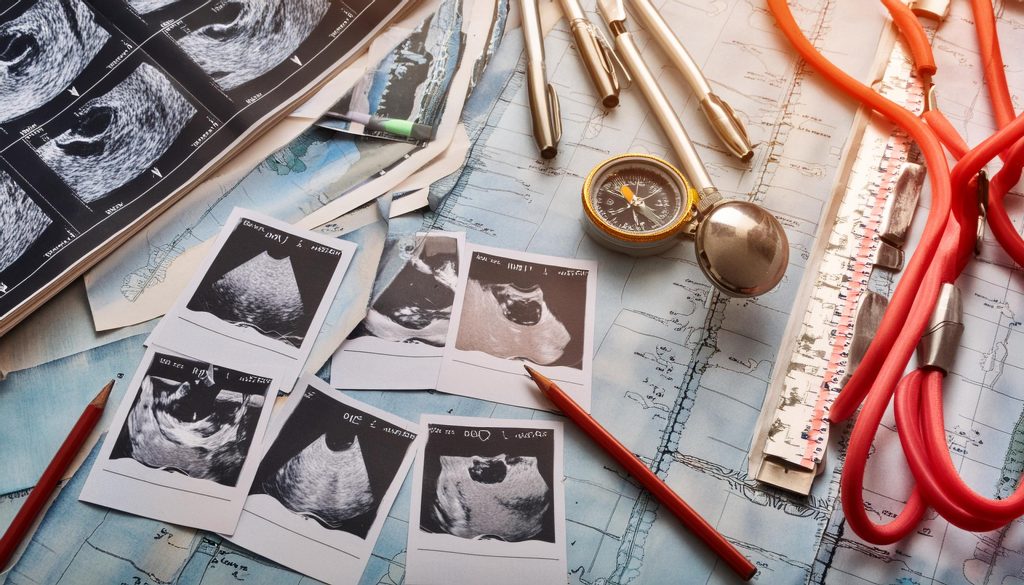News and Information
NIH Charts a New Course: POCUS as a Cornerstone of Modern Medicine

Ultrasound Renaissance: NIH’s Strategic Investment in Point-of-Care Imaging
The National Institutes of Health (NIH) is signaling a paradigm shift in healthcare delivery by championing the widespread adoption of point-of-care ultrasound (POCUS). This landmark initiative is not merely a technological endorsement; it’s a strategic investment in a future where POCUS becomes a fundamental tool in every clinician’s arsenal.
POCUS: The Multifaceted Catalyst for Change
POCUS, once considered a niche application, is now recognized by the NIH as a powerful catalyst for transformative change across the medical landscape. Its impact spans multiple dimensions:
- Diagnostic Precision: POCUS’s real-time visualization capabilities empower clinicians with unparalleled diagnostic accuracy, often surpassing traditional physical examinations and streamlining the diagnostic process.
- Procedural Excellence: By providing visual guidance during interventions, POCUS minimizes complications and optimizes procedural outcomes, ensuring patients receive the safest and most effective care.
- Patient Empowerment: POCUS fosters a collaborative relationship between clinicians and patients. When patients can see what’s happening inside their bodies, it enhances their understanding of their condition and empowers them to make informed decisions about their healthcare.
NIH’s Roadmap: Democratizing POCUS for Optimal Care
The NIH’s implementation plan for POCUS is a blueprint for democratizing access to this transformative technology. Key elements of this plan include:
- Expanding Training and Education: The NIH aims to provide comprehensive training programs that equip healthcare professionals across all specialties with the knowledge and skills necessary to harness the full potential of POCUS.
- Promoting Research and Innovation: By fostering research initiatives and supporting the development of innovative POCUS applications, the NIH seeks to continually push the boundaries of what’s possible in point-of-care imaging.
- Integrating POCUS into Clinical Guidelines: The NIH envisions a future where POCUS is seamlessly integrated into clinical practice guidelines, ensuring that its benefits are accessible to all patients.
A Paradigm Shift: From Reactive to Proactive Medicine
The NIH’s unwavering support for POCUS signifies a profound paradigm shift in healthcare philosophy—a move away from reactive medicine towards a proactive, patient-centered approach. By equipping clinicians with POCUS, the NIH is enabling them to identify and address potential health issues early on, before they escalate into more serious conditions.
The Ripple Effect: POCUS’s Impact Beyond the Bedside
POCUS’s transformative influence extends far beyond the immediate point of care. By reducing the need for costly and time-consuming diagnostic tests, POCUS contributes to:
- Lower healthcare costs
- Reduced patient wait times
- Improved resource allocation
Moreover, POCUS is empowering healthcare providers in underserved communities, where access to traditional imaging modalities may be limited, to deliver high-quality care that rivals that of urban centers.
The Future of Healthcare: POCUS at the Forefront
 The NIH’s commitment to POCUS heralds a new era in medicine—one where point-of-care imaging is no longer a luxury but a necessity. As POCUS becomes increasingly integrated into routine clinical practice, we can expect to see:
The NIH’s commitment to POCUS heralds a new era in medicine—one where point-of-care imaging is no longer a luxury but a necessity. As POCUS becomes increasingly integrated into routine clinical practice, we can expect to see:
- Improved patient outcomes
- Enhanced diagnostic accuracy
- Increased efficiency in care delivery
- Greater equity in healthcare access
The NIH’s vision is clear: a future where POCUS empowers clinicians, improves patient outcomes, and transforms the healthcare landscape for the better.
To delve deeper into the NIH’s implementation plan for POCUS and explore the groundbreaking research that underpins this initiative, be sure to visit:
https://www.ncbi.nlm.nih.gov/pmc/articles/PMC11113028/
Reference:
Lichtenstein, D. A. (2005). Why lung ultrasound? Critical Care Medicine, 33(10 Suppl), S346.
